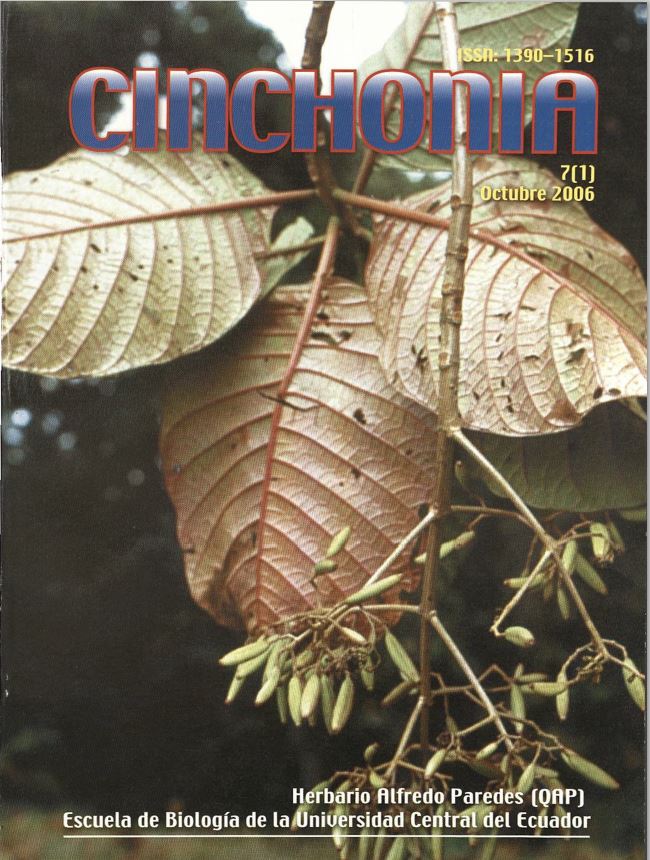ESTRUCTURA, COMPOSICIÓN Y ETNOBOTÁNICA DEL SENDERO "CCOTTACCO SHAIQUI", CUYABENO-ECUADOR
Main Article Content
Abstract
The trail of the “Ccottacco shaiquP hill is elongated and 1.3 km long. It is located in a forest over small hills on the left margins of the Cuyabeno river, in La Floresta area, in the Siona community of Puerto Bolívar of the Cuyabeno Faunal Production Reserve, Sucumbíos province. The coordinates of the area are 00°04.44’S - 76°06.51’W, the altitude is 250 masl. The area is part of the Tropical Humid Forest life zone. In April 2005 we marked with aluminum plates and steel nails, at a height of 1.30 m above the ground, all the trees, shrubs, vines and hemiepiphytes with DBH > 5 cm. Each metalic píate was placed in the side of the trunk cióse to the trail. We marked all the pfants that were within 1 m of both sides of the trail; ocassionally we marked individuáis that occurred beyond this band. We measured the DBH and estimated the height of the marked plants. We also collected botanic samples of the individuáis and recorded the Cofán ñames and uses of plants from Don Alberto Greta and his wife María Mendua Species identification was carried out by Dr. Carlos Cerón and Dr. Carmita Reyes in the Alfredo Paredes (QAP) and Nacional (QCNE] Herbariums. A duplícate of the collections is kept in the QAP Herbarium. We calculated the Valué of Importance (VI) of the species, genera and families. We recorded 450 individuáis from 214 species, 129 genera and 43 families. Total basal area was 35.6 m2. Two hundred and ten individuáis were trees and 4 were vines. Based on the VI, the most important species were Parkia nítida, Oenocarpus bataua, Eschweilera coriácea, Osteophloeum platyspermum, Tachigali paraensis, Pseudolmedia laevigata, Erisma uncinatum, Iryanthera laevis, Matisia malacocalyx and Vochysia grandis. The same criterion was used to determine the most important genus: Parkia, Eschweilera, Iryanthera, Oenocarpus, Licania, Hyeronima, Pseudolmedia, Osteophloeum, Tachigali and Protium, and families: Mimosaceae, Moraceae, Sapotaceae, Myristicaceae, Euphorbiaceae, Arecaceae, Vochysiaceae, Chrysobalanaceae and Caesalpiniaceae. Of the total number of species, 95.3% had a Cofán ñame and use. The location of the forest over small hills and its good consen/ation status allow the local people of the Cuyabeno River to carry out ecotourism activities, sharing this technical, ethnobotanical and ecological information with the tourists that visit the area.

